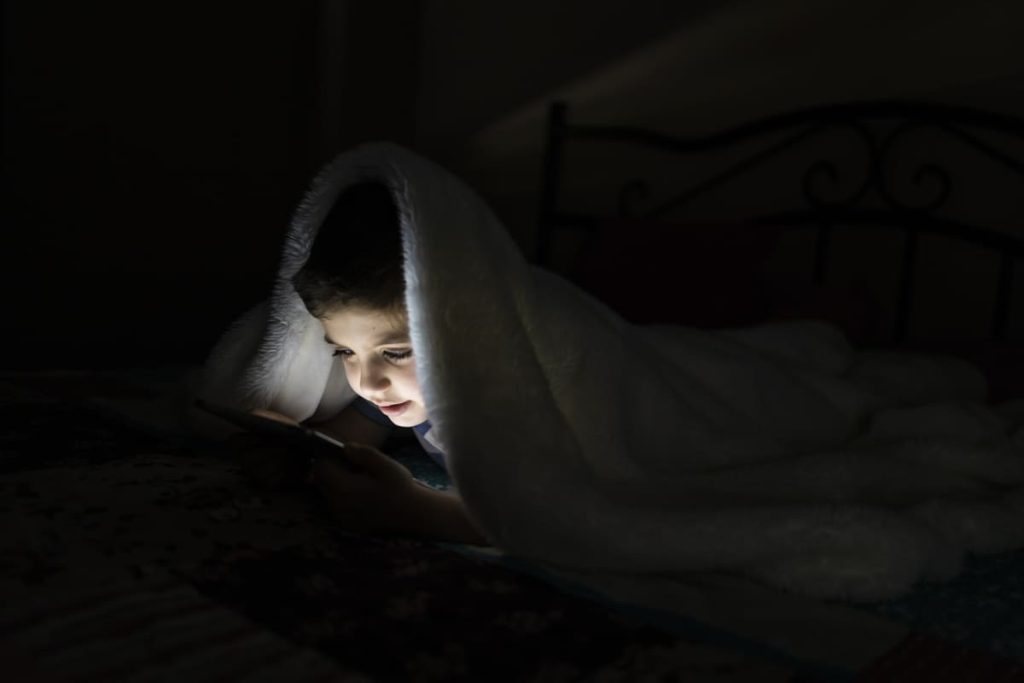Daylight saving time can be challenging for families, especially with young children. Our guide, “Ways to Prep Your Kids for Daylight Saving Time,” offers pediatric tips for a smooth transition, ensuring both babies and kids adapt easily and parents manage the time shift with less stress.
Understanding Daylight Saving Time
Daylight Saving Time (DST) is that time of the year when clocks are set one hour ahead.
Why? Advantageously, it allows everyone to stay up later and enjoy more evening daylight during the warmer months. Typically, this means that everyone gets a little extra sunlight for evening activities as the days feel longer.
The Process:
- Spring Forward: In spring, clocks move forward from standard time.
- Fall Back: Come autumn, they’re set back to standard time, giving everyone an extra hour of sleep that night.
Though adjusting clocks forward or back has its quirks. Here’s how DST affects us:
- Energy Use: The original idea was to save energy, as less artificial light would be needed in the evenings.
- Biological Clocks: Our internal clocks can get a bit out of sync with the sudden shift.
When daylight saving time ends in the fall, everyone adjusts their clocks to “fall back” to standard time. For those with children, this time change can be particularly tricky, as kids’ sleep schedules are sensitive to changes. The end of DST means it gets darker earlier in the evening, which can affect children’s bedtime routines and overall sleep patterns.
Below is a brief timeline for reference:
| DST Event | Clock Change | Typical Period |
|---|---|---|
| Begin DST | Forward 1 hour | Spring |
| End DST | Backward 1 hour | Fall |
KinVibes Pro-Tip: Remember, though, not all places observe DST. For instance, most of Arizona and Hawaii skip the ritual altogether. When planning family schedules, it’s always good to be aware of when these changes kick into gear.
The Importance of Sleep for Children
When children don’t get the sleep they need, it can affect everything from their mood to their ability to focus. Establishing good sleep habits plays a critical role in their overall development.
Effects of Sleep Deprivation on Kids
Sleep deprivation in children often manifests as tiredness and irritability, making them appear cranky.
Consistent sleep deprivation can alter normal physiological functions, such as hormone production, including melatonin, which is vital for regulating sleep cycles.
Lack of adequate sleep can negatively impact their mood and behavior, but the consequences extend beyond that. They may struggle with learning, memory retention, and even face a higher risk of obesity and immune system deficiencies.
Role of the Circadian Rhythm
The circadian rhythm, or body clock, is an internal system designed to regulate feelings of sleepiness and wakefulness over a 24 hours. This rhythm is influenced by external cues, like sunlight, which is why daylight saving time can significantly disrupt children’s sleep patterns.
Children’s exposure to natural light should be increased during the day to help reset their internal clocks.
Good To Know: Adjusting bedtimes and routines gradually before the time change can aid their circadian rhythm, supporting a smoother transition into new sleep cycles influenced by daylight changes.
Ways to Prep Your Kids for Daylight Saving Time

Establishing a consistent bedtime routine is critical for children, as it prepares their body and mind for a good night’s sleep. Focusing on two key elements can make the transition into sleep much smoother: a consistent schedule and a relaxing environment.
One effective strategy is to encourage exercise during the day, which not only helps with falling asleep but also makes it easier to stay asleep. Gradually moving bedtime earlier, by about 30 minutes for three days, can significantly ease the transition. This adjustment might take about a week, but with a little later start and consistent efforts, it’s definitely achievable.
Crafting a Consistent Bedtime Schedule
Develop a consistent bedtime schedule such as earlier based on clock time. This helps regulate a child’s internal clock, making it easier for them to fall asleep and wake up naturally. Here’s how parents can build a routine:
- Set a specific bedtime: If a child normally sleeps at 8 p.m., gradually adjust their bedtime earlier by 15-minute increments in the days leading up to Daylight Saving Time.
- Routine activities: Incorporate calming activities like reading a book or taking a warm bath before bed, which signal to the child that it’s time to wind down.
Creating a Relaxing Sleep Environment
A child’s sleep environment greatly influences their ability to sleep well. To keep up a relaxing child’s sleep schedule:
- Dim lights: Use soft, warm lighting in the evening to encourage the production of melatonin, the sleep hormone.
- Limit electronics: Ensure kids stop using electronic devices at least 30 minutes before starting the bedtime routine to prevent sleep disruption.
- Comfort: Make sure the child’s sleep space is comfortable, quiet, and at a cool, yet comfortable, temperature to promote uninterrupted sleep.
Adapting to The Time Change

When daylight saving time rolls around, parents often worry about how to tweak their kids‘ sleep schedules.
The “fall back” and “spring forward” shifts can disrupt a child’s delicate circadian clock, adjusting a bit of a challenge. The key is a gradual transition.
Bedtime Changes: Three days before falling back, start adjusting a child’s bedtime before the time change. If a child typically sleeps at 8 p.m., parents can begin by moving bedtime 15 minutes earlier each night. It eases the body into the new schedule and helps the internal clock recalibrate without a sudden jolt.
Wake Up Calls: Similarly, morning wake-up times should shift incrementally. By waking a child 15 minutes earlier than usual, it aligns their wake-up routine with the upcoming change.
- Melatonin and Electronics: Since melatonin, the sleep hormone, is affected by light, limiting screen time to at least 30 minutes before bed can be beneficial. Electronics emit blue light, which can trick the brain into feeling more awake.
- Light Exposure: Increasing exposure to natural light in the mornings can help adjust the circadian rhythm to the new time. Parents might consider a morning walk to kickstart their child’s day.
KinVibes Pro-Tip: Always maintain a consistent routine. Even slight and steady changes leading up to daylight saving time can significantly help children adapt with less fuss. Everyone’s child will sleep comfortably if parents keep bedtime rituals consistent.
Practical Tips for Parents
Adjusting to Daylight Saving Time can be a challenge for kids and parents alike. These 5 ways help create a smoother transition for everyone in the family.
Gradual Adjustment to New Bedtimes
To adjust your child’s new schedule, parents should consider shifting bedtimes by 15-minute increments over several days before the time change.
For example, if a child’s usual bedtime is 8 p.m., they should go to bed at 7:45 p.m., then 7:30 p.m., until they’ve adjusted to the new time.
- Day 1: Bed at 7:45 p.m.
- Day 2: Bed at 7:30 p.m.
- Day 3: Bed at 7:15 p.m.
Managing Morning Wake-Ups
Mornings can be disorienting during time changes. Parents can use natural light to help kids wake up by opening curtains and letting sunlight in. For complete darkness at bedtime, consider using blackout curtains. Here’s how to prepare:
Morning Tips:
- Open curtains to let daylight in
- Use a gentle alarm or wake-up lights if necessary
Dealing with Naps and Mealtimes
Maintaining a regular nap schedule is crucial, particularly for toddlers who may find the time change more disruptive. Parents can also adjust mealtimes slightly to align with the new clock time, which helps reinforce the adjusted sleeping patterns.
Nap Strategy:
- Move your child’s naps along with bedtimes in 15-minute increments.
Mealtime Advice:
- Serve breakfast at the new time to set a routine.
- Ensure lunch and dinner are consistent with the updated schedule.
Addressing Specific Challenges

Adjusting to Daylight Saving Time (DST) involves tackling specific challenges that can impact a child’s sleep and overall routine. From the allure of electronic devices to the need for physical activity and the unique needs of teenagers, there are targeted strategies that can help.
Screen Time and Electronic Devices
Electronic devices are a significant part of most kids’ lives, but they can cause sleep disruption. The blue light emitted by screens can interfere with the production of melatonin, the hormone responsible for regulating sleep. To tackle this:
- Limit screen time an hour before bed.
- Encourage reading or quiet activities to wind down.
Physical Activity and Outdoor Time
Regular physical activity and exposure to sunlight during the day can greatly assist in adapting to the time change. Sunlight serves as a natural cue for the body clock. For effective adjustment:
- Schedule outdoor activities in the afternoon.
- Help your child adjust and let them get at least 60 minutes of physical activity per day.
Special Considerations for Teenagers
Older kids like teenagers have unique sleep needs and challenges with DST changes unlike younger kids. Their biological clocks often naturally predispose them to go to sleep later and wake up later than adults and younger children.
- Set their clocks back by encouraging a consistent sleep routine, even on weekends.
- Discuss the importance of daylight saving time—and sleep patterns.
When to Seek Professional Advice

Occasionally, a child’s adjustment to Daylight Saving Time can reveal or exacerbate underlying sleep issues. If a child consistently struggles with sleep after the time change, it might be wise for parents to consult in a pediatric sleep center.
The National Sleep Foundation recommends that if significant sleep problems persist for more than two weeks, parents should reach out for pediatrics advice.
Some flags indicating it’s time to talk to professionals:
- Frequent Wake-ups: If a child wakes up multiple times during the night and this behavior becomes a pattern.
- Difficulty Falling Asleep: When a child takes much longer than 20-30 minutes to fall asleep regularly.
- Early Rising: Consistently waking up much earlier than usual that leads to a marked decrease in total sleep time.
- Daytime Sleepiness: Excessive sleepiness during the day which might affect school performance or general mood.
- Changes in Behavior: Increases in irritability, hyperactivity, or other behavioral changes.
If such issues are noted, caregivers might consider the following steps:
- Document Sleep Patterns: Keep a sleep diary to present to the healthcare professional.
- Consult a Pediatrician: A pediatrician can rule out any medical issues that might be affecting a child’s sleep.
- Seek a Sleep Specialist: For persistent problems, pediatricians may refer parents to a sleep specialist, particularly those associated with accredited sleep centers. These specialists often have strategies and interventions unique to children’s needs.
KinVibes Pro-Tip: Engaging with professionals can ensure children get the restful, high-quality sleep necessary for their development, regardless of the time of year.
Frequently Asked Questions
Navigating the clock change during Daylight Saving Time can mystify kids and their parents. This section demystifies common queries with straightforward advice on adjusting sleep schedules and understanding the time shift.
How can I adjust my baby’s sleep schedule for ‘spring forward’?
For babies, parents can gradually shift bedtime earlier by 15 minutes every few nights before the transition. This can help ease the change when ‘spring forward’ arrives.
Can you explain Daylight Saving in a way my kids would understand?
Daylight Saving Time is like playing hide and seek with the sun. Twice a year, people change their clocks to either make better use of the sunlight when they are awake.
What tips can help kids cope with the time change during Daylight Saving Time?
Children benefit from consistent routines and gradual adjustments. Start by shifting their sleep schedule slightly and maintain a calming bedtime routine.
How long typically does it take for children to get used to the new Daylight Saving Time schedule?
Most children adapt to the new schedule within a few days to a week. Consistency is key to helping them adjust more quickly.
What’s a gentle way to shift my child’s routine for the end of Daylight Saving?
When Daylight Saving Time ends, gradually delaying bedtime leading up to the change can help. Turning off electronic screens before bed can also ensure a quality night’s rest.






